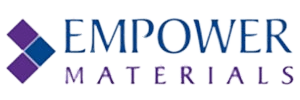Empower Materials Inc. is the producer of QPAC®, the world's cleanest thermally decomposable organic/sacrificial binders. QPAC® cleanly decomposes into CO2 and water in many types of atmospheres and leaves virtually no residue. This property contributes to QPAC®'s widespread usage in many demanding applications.
.jpg)
Image Credits: shutterstock.com/science photo
QPAC® poly(alkylene carbonate) copolymers are a unique family of innovative thermoplastics representing a true break-through in polymer technology. While traditional plastics have been primarily petroleum-based, these materials are derived from carbon dioxide and are produced through the copolymerization of CO2 with one or more epoxides. The resultant polymers are amorphous, clear, readily processible, and have long-term mechanical stability. They are also environmentally friendly by consuming 50% fewer petrochemicals, as compared to other polymers which are 100% petrochemical-based. In addition, they may exhibit biodegradable properties consistent with an environmentally friendly binder.
QPAC® 25, polyethylene carbonate, and QPAC® 40, polypropylene carbonate, are the two most widely used products within our family of binders. However, there is a wide range of QPAC® polymers possible by varying the epoxide monomer or using blends of epoxides to produce a specific reaction. Our technical group has the expertise to effectively work with you to develop the appropriate product for your application.
Production Capabilities of Empower Materials
Empower Materials is the world's only commercial manufacturer of polyalkylene carbonates. Empower Materials can make large quantities (1000's kgs) of QPAC® 25, polyethylene carbonate, QPAC® 40, polypropylene carbonate, and QPAC® 100 - a terpolymer of polypropylene carbonate and polycyclohexene carbonate.
Additionally, a wide range of other QPAC® polymers is possible via the substitution of oxiranes (epoxides) using the same production equipment configuration. In addition to QPAC® 25, QPAC® 40 and QPAC® 100 (polypropylene carbonate, polyethylene carbonate, and polypropylene carbonate/polycyclohexene, respectively). The following have been successfully synthesized on pilot scale equipment:
QPAC® PBC (poly-butylene-carbonate) and QPAC® 130 (poly-cyclohexene carbonate)
Empower Materials also has the technology to modify the polymer's molecular weight across a very broad range.
QPAC Organic Binders in Fuel Cell Fabrication
QPAC® is clean-burning, it decomposes at very low temperatures, it burns out completely and consistently, and offers exceptional green strength for ceramic parts.
If you look closely at the composition of QPAC®, you may find that it has additional benefits for other uses in the construction of fuel cells.
QPAC® 25, or PEC polyethylene carbonate can prevent or obstruct oxygen from passing through the porous membrane film.
QPAC® 40, or PPC polypropylene carbonate is an effective water barrier. It is not soluble in water, which is the main constituent in the electrolytic solution into which the fuel cell is placed.
Both polymers are suitable for extrusion or co-extrusion with/for the porous selective membrane film.
Both polymers could be utilized as a solid matrix for holding the electrolyte or catalyst in place in the fuel cell. Both grades of QPAC® would be extremely flexible in terms of the shape or thickness of the matrix.
Additionally, QPAC® could be altered to add some conducting moiety to the polymer backbone, which would allow it to be used as the electrolyte.

This information has been sourced, reviewed and adapted from materials provided by Empower Materials.
For more information on this source, please visit Empower Materials.